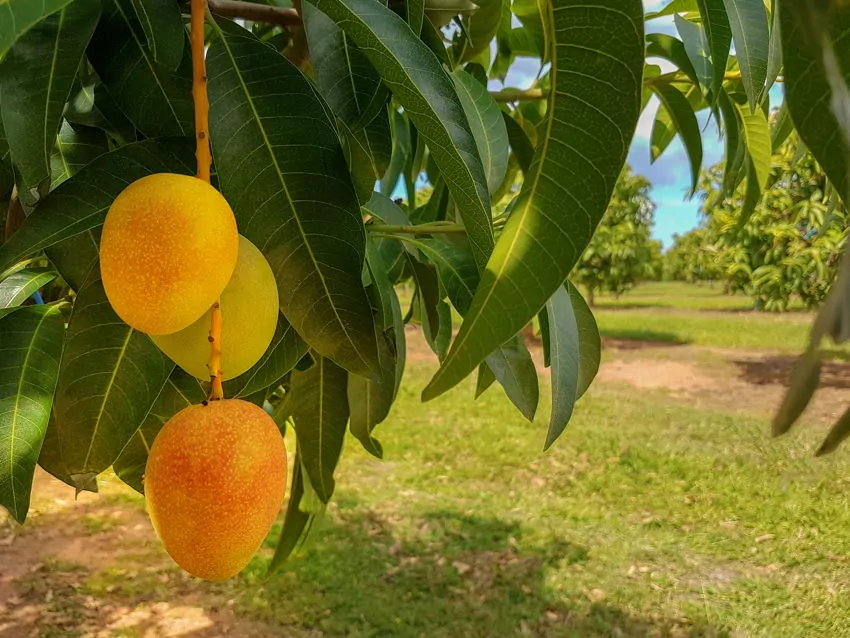
My Top Three Picks For Agricultural Investment In 2019
Where I’ll Plant My Money In 2019 And Watch It Grow
No matter how big or small your real estate investment portfolio, it should include agriculture.
We live in a world with an exploding population and dwindling arable land. We’re looking at more than 9 billion people on this planet by the middle of this century, a sobering reality that is translating to a global race for farmland.
Billions of dollars are being spent each year on research in efforts to prevent a disaster… and, of course, to make a tidy corporate profit.
Genetic engineering (GMOs) is usually at the forefront of this agro-tech, but the mere mention of the phrase “GMO” scares off a lot of hungry consumers.
Plus, the costs associated with GMOs mean they’re an investment opportunity reserved entirely for “Big Agro.” You and I are left on the sidelines to find other ways to take a position in this market.
That’s why I’ve worked over the past seven years to identify opportunities for individual investors like you and me to profit from the growing global demand for food. This market opportunity has become a key focus and remains a priority investment agenda for me as we look ahead to 2019.
Productive land always retains its potential to make money. It is an excellent option for investors who want regular cash returns, cash flow that can amount to a self-made pension to help fund your retirement, as well as a legacy that can be handed down to future family generations.
Over the past seven years, I have introduced readers to the best agricultural investment opportunities I’ve identified worldwide.
If you’ve yet to act on one of these turnkey, ideal-for-the-individual-investor opportunities, I strongly recommend that you take action now. The cost of entry for these opportunities is rising.
If you’ve already diversified your portfolio to include this asset class, well done. Now I recommend that you, like me, continue to expand this portion of your holdings.
What, specifically, should you be looking to buy in 2019?
Here are my top three picks for the New Year…
#1: Organic-Certified Fruit Punch Mangos in Panama

I’ve worked with many farm management groups over the past 20 years, including one in Panama that has impressed me hugely. This group has developed successful plantation after successful plantation, and its agricultural projects check all the boxes.
This developer has a proven track record. They’ve got systems in place to ensure optimal production. They’re growing products that are in growing global demand, products that are more than simple commodities and that therefore command premium prices when they come to market.
Finally, very important, this development group has its route to market already in place. Crops currently being harvested are already in supermarkets, and the developers have commitments from major buyers from the United States and Europe for future harvests.
The entire plantation, and all produce grown within it, is certified as USDA Organic. This is a critical requirement for bringing the product to market in the United States.
In addition, this plantation has a serious market advantage…
It is producing a product that is enjoying exploding demand.
The fruit in question here is an organic mango. Mango is a relatively new food for Americans, but demand is expanding rapidly. The mango is already one of the most consumed tree fruits on the planet, and that appetite is spreading fast to bigger consumer markets.
Which brings me to the opportunity I want to put on your radar right now… the Fruit Punch mango.
The Fruit Punch mango trees being grown at the plantation I’ve identified in Panama have two strengths that give them an edge over other varieties of mangos: They are highly disease-tolerant, and they thrive in humidity.
In the context of Panama, trust me, these two things amount to superpowers.
Not only is this unique hybrid mango ideal for this environment, but it is also considered the most flavorsome mango.
You can now invest in 1 hectare of Fruit Punch mangos for US$39,000.
Returns begin in year four (because the trees need to mature), when the projected yield is 12.62%. In years five, six, and seven, the projected return is 24.08%. In year eight, it goes up to 32.4% and continues to rise steadily from then onwards.
The year three return works out to US$4,920 in net income per hectare. In year four, net income is projected to be as high as US$9,391; in year eight it is projected at US$12,639.
Get in touch here for more information on this Fruit Punch mango opportunity.
#2: Aquaponics in Thailand

Aquaponics is defined as the combination of hydroponics (growing produce in water rather than dirt) and aquaculture (farming fish in ponds). The basic premise is that the waste from the fish provides the nutrients for the produce, meaning the process is self-sufficient, holistic, and utterly efficient.
What’s more, this method uses less than 1/10th the water of traditional farming, and, thanks to no chemical pesticides and fertilizers, it is easy to keep the production organic.
And, again, it requires no arable land. Instead, as an investor, you own the growing system and let someone else manage its production and maintenance for you.
One big benefit of an aquaponics system for the investor is that it begins producing cash flow quickly. Lettuce, for example, can be harvested every three weeks, more or less. With some fine tuning, that cycle can be reduced by several days. The fish component of the system takes a little longer, with an average growth cycle of six months.
Taken together, that means you can have 2 fish harvests and at least 17 lettuce harvests a year.
The group I’ve identified in Thailand is focused right now on the production of lettuce and tilapia. R&D they’ve been working on for the last year has them moving into herbs and crayfish as those products offer higher margins. At this point every lettuce harvest is pre-sold as soon as the seeds get planted.
At the aquaponics project I’ve identified, the current purchase price of US$31,000 includes delivery and setup as well as access to the on-site infrastructure (greenhouses, water systems, etc.).
After two years of operations, the developer has announced that the next two greenhouses will be the final opportunity to invest at this price. The cost of investing will increase on Feb. 15, meaning right now is your last chance to act before the price hike.
The manufacturer rates the systems for 20 years. Over that lifetime, the annualized ROI projection (IRR) is 14.48%.
Get in touch here for more information on this aquaponics opportunity.
#3: Truffles in France

The third agricultural investment that I want to put on your radar as we look ahead to 2019 is in France… and it’s not a vineyard.
It’s a truffle plantation.
Truffles don’t grow on trees, but rather on tree roots. Historically, farmers went into forests to hunt truffles with pigs. The pigs could smell when the truffles were ripe and would literally root them out of the ground.
Today, farmers use trained dogs to hunt for truffles. They’re cheaper to maintain… and they don’t eat the truffles after they find them.
Of course, you can’t just plant trees in the ground and expect to find truffles growing on the roots. You need specific trees for specific truffles… and you need the spores.
Truffles require a network of spores before they’ll start producing in volume. That’s where the science comes in. The plantation developer that I’ve found is working with a lab that has mapped the DNA of the truffles they grow. That knowledge allows them to confirm that the truffles they are using to create the spores for mixing into the roots of the trees are, in fact, the truffle they want to grow.
To ensure the quality and purity of the plantations, the lab checks every truffle used in the spore inoculations that are down on the tree roots.
Despite renewed efforts aided by modern science, truffle production can’t keep up with demand. In fact, estimated demand is at 10 to 20 times (or more) than production for the French black truffle.
That’s one reason this opportunity caught my attention.
Another is the up to 24% annualized returns projected by the plantation developer over the 15-year investment cycle.
In the first few years, cash flow is low, as the spores need time to multiply before large quantities of truffles get produced. By year 12, annual cash flow is projected to be as much as 75% of the initial investment.
The developer requires a minimum purchase of 100 trees. Right now, the cost of 100 trees is US$44,885.
Get in touch here for more information on this unique truffles investment.
Lief Simon



